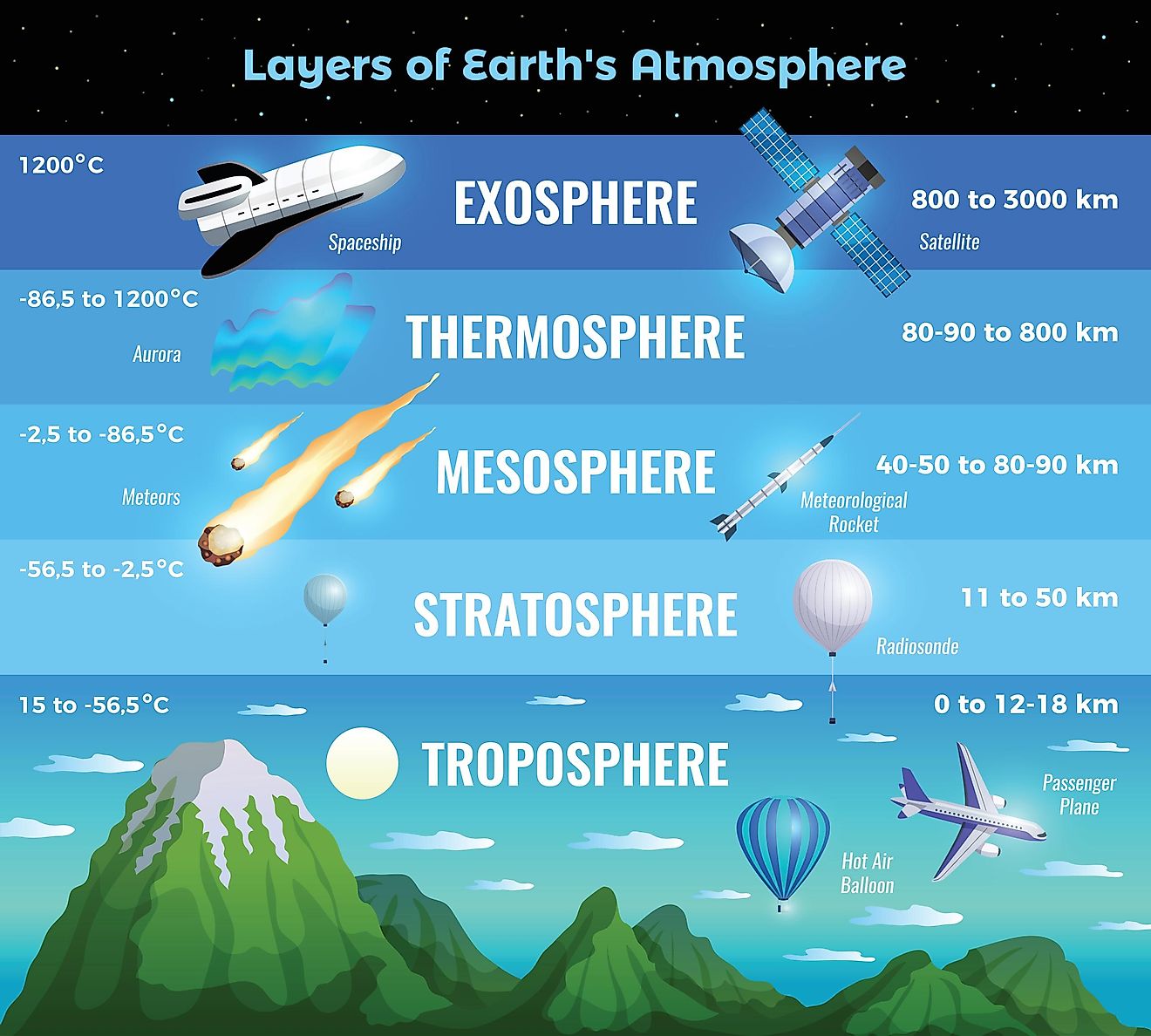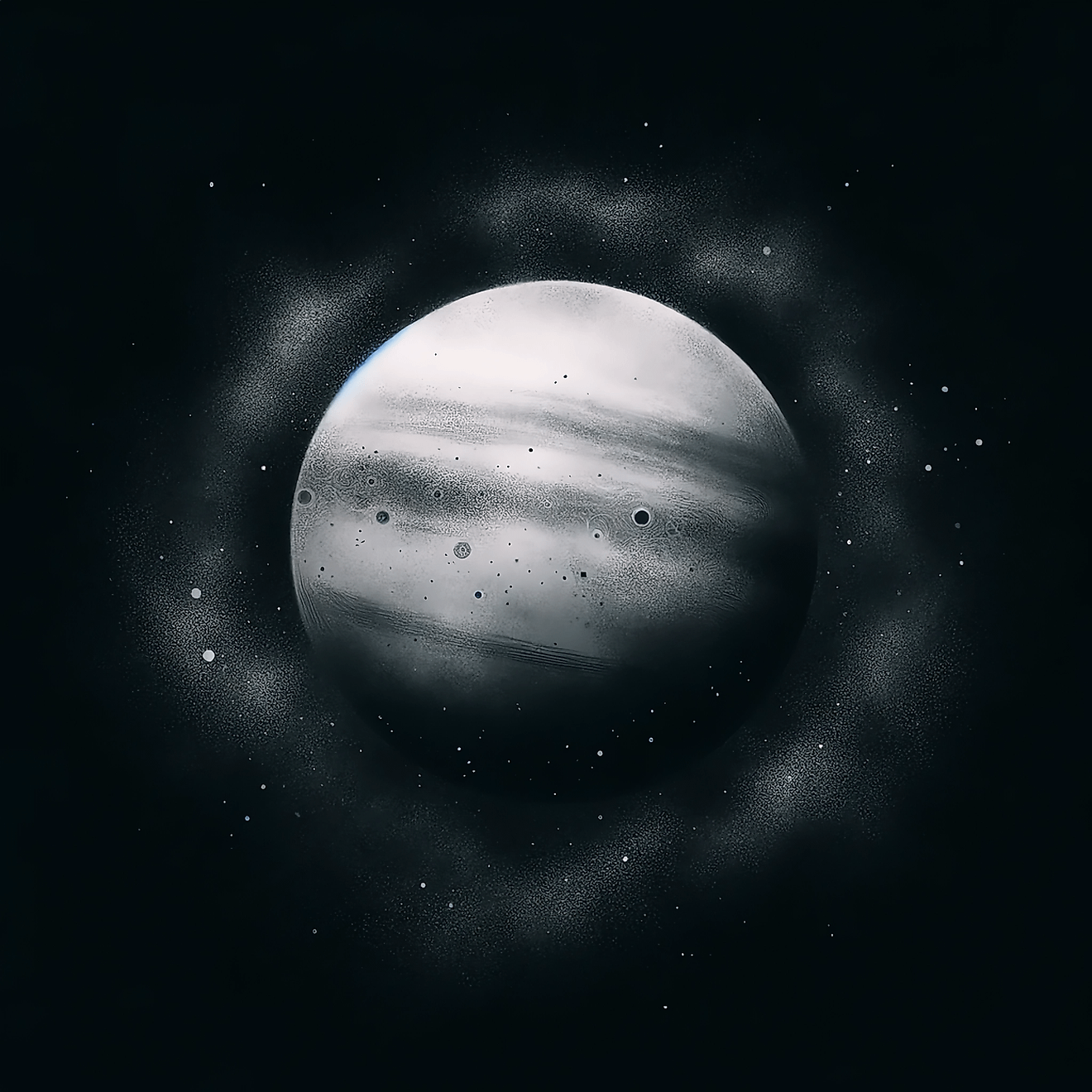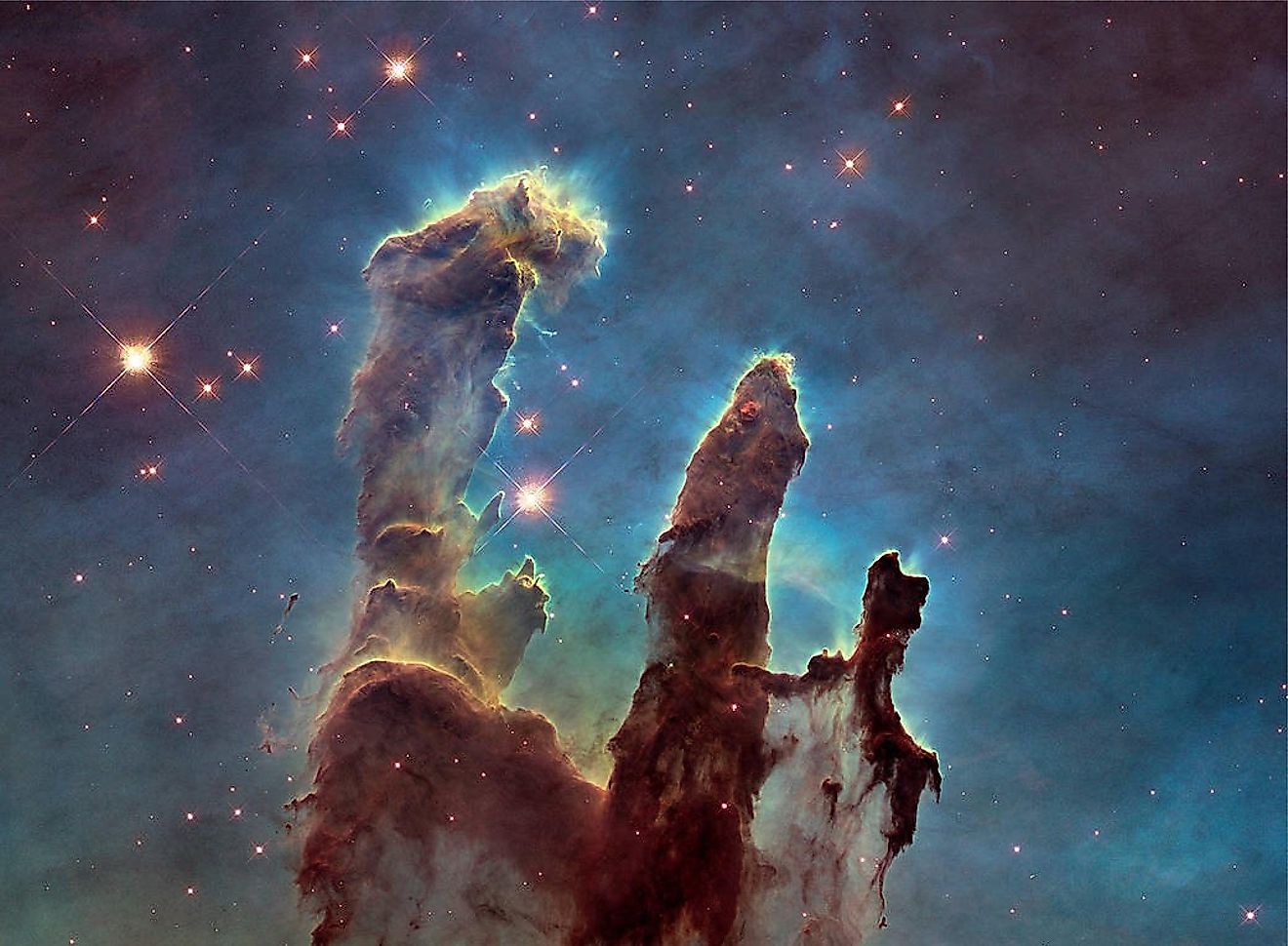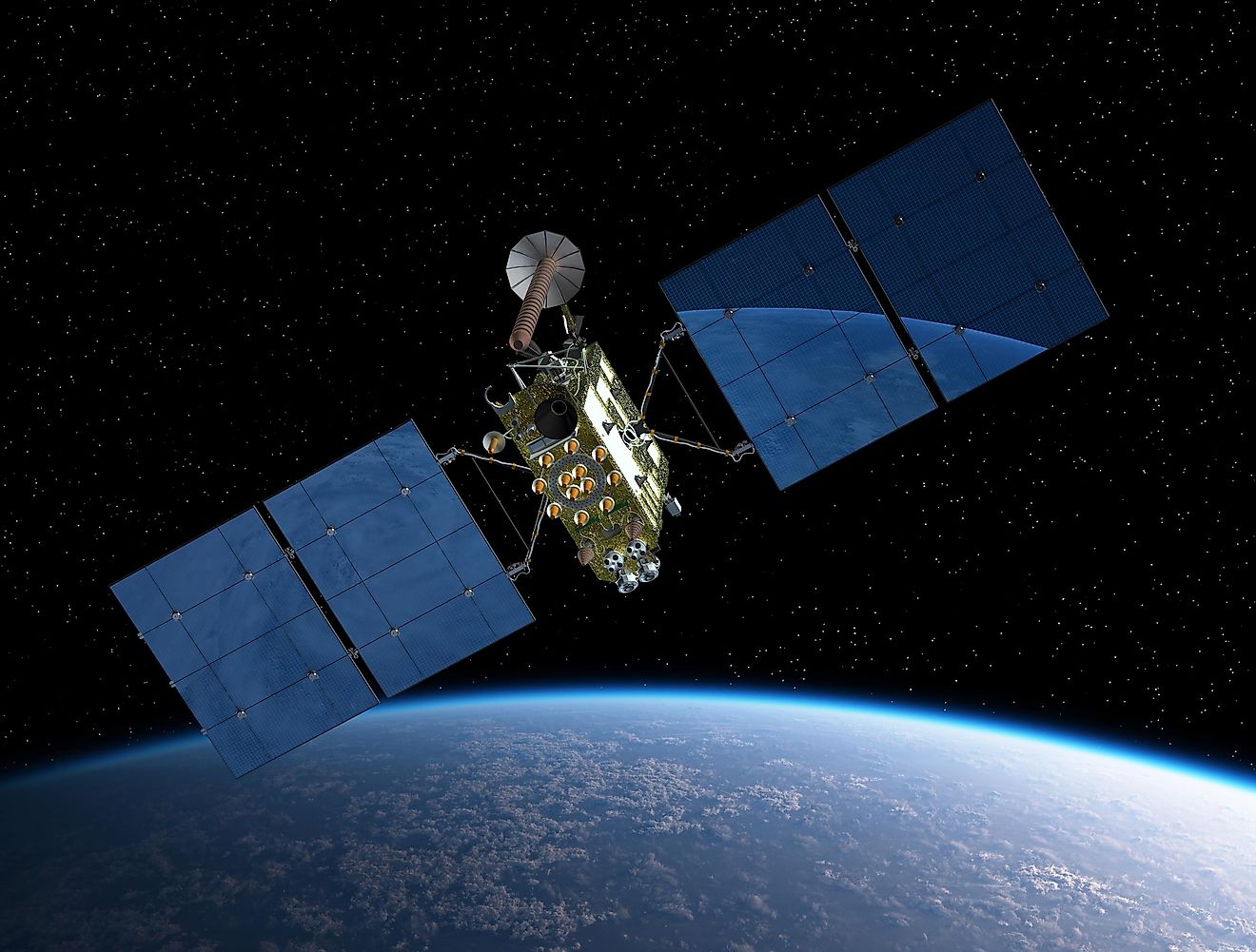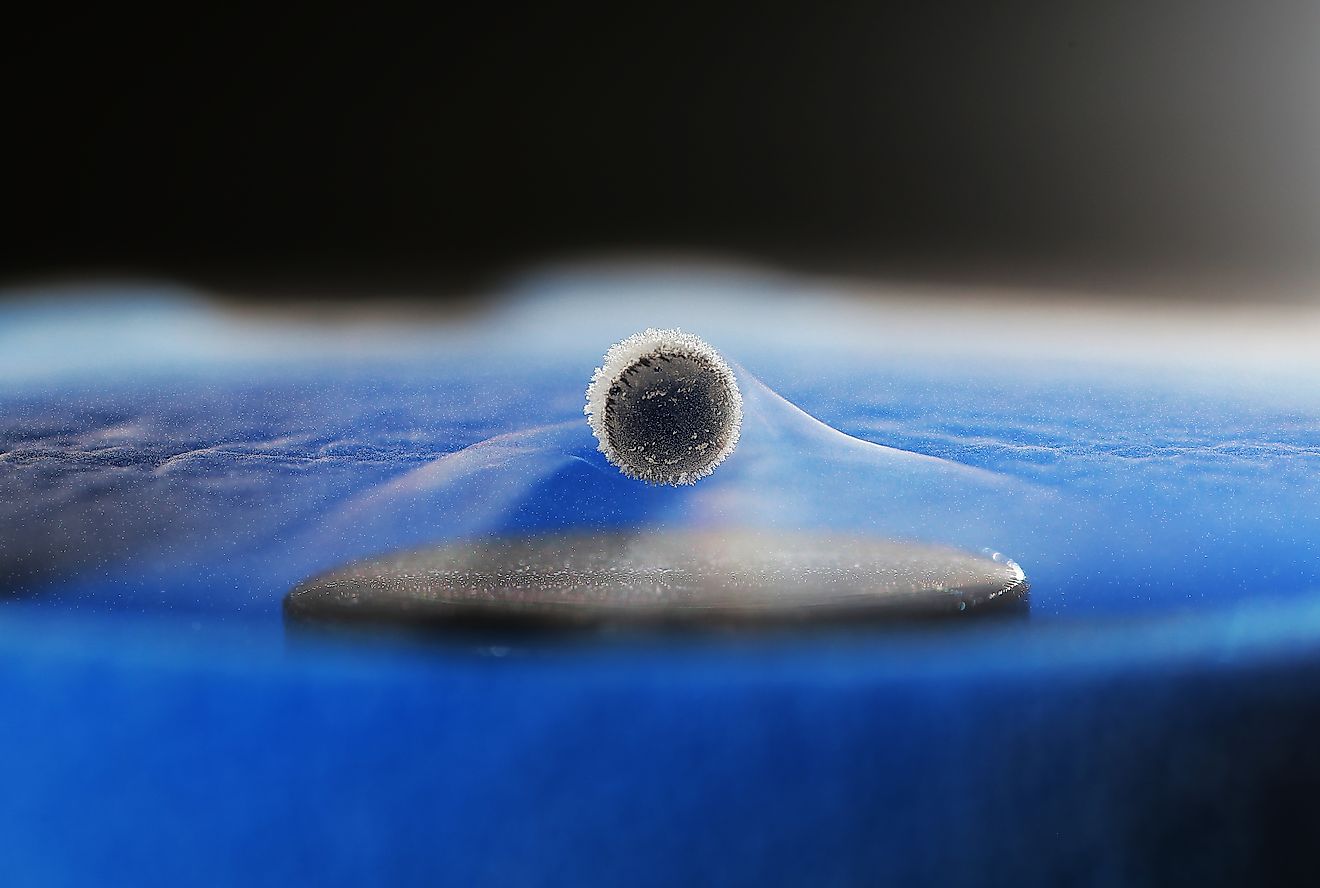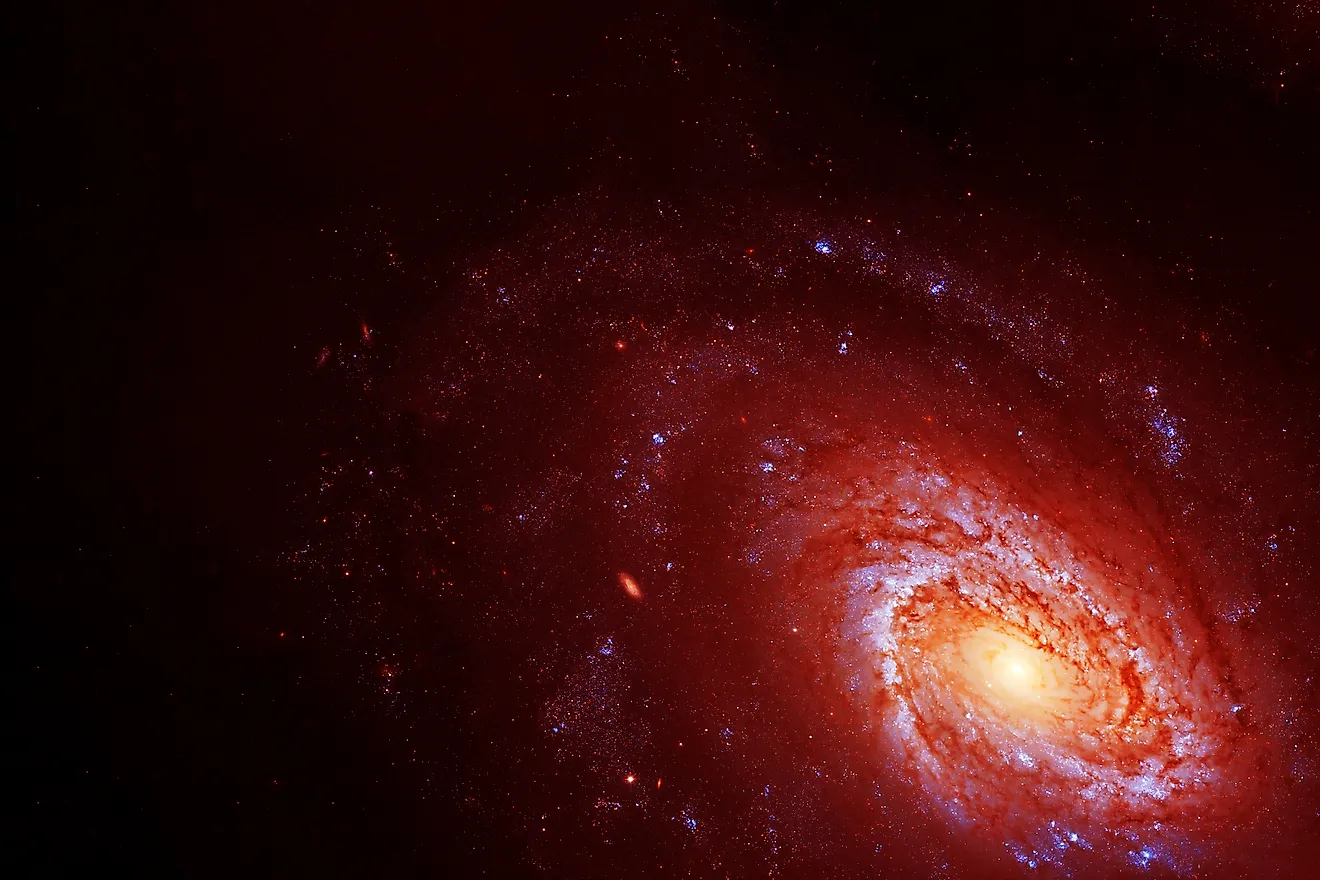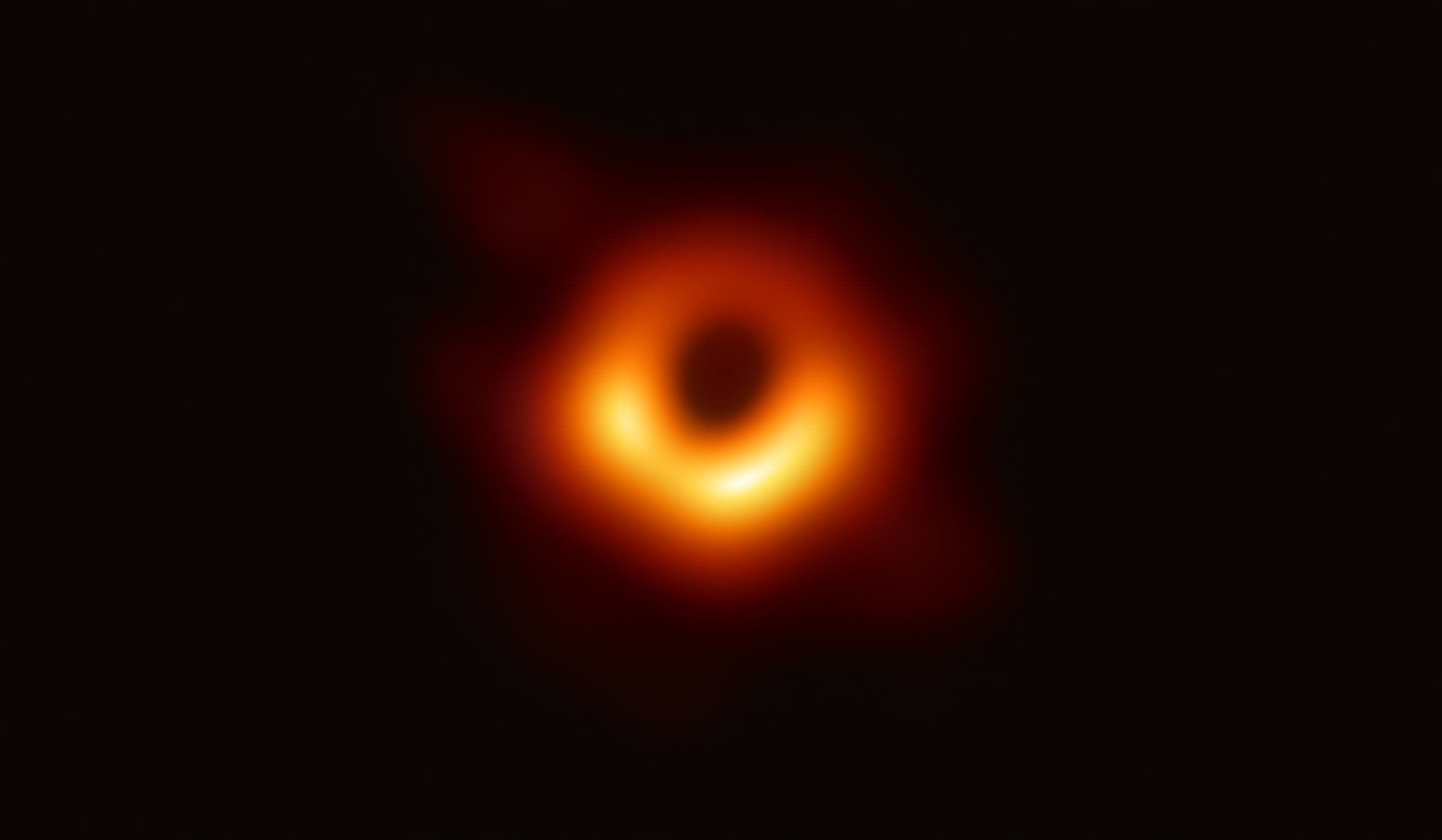
Black Holes
A black hole is an incredibly dense region in space where gravity is so intense that nothing, not even light, can escape its pull. Contrary to its name, a black hole is not technically a hole. Instead, it consists of an enormous amount of matter compressed into an infinitely small space, resulting in its powerful gravitational pull. Black holes typically form when massive stars die and undergo a supernova explosion, collapsing in on themselves. Although much remains to be understood about black holes, they are crucial to the evolution of galaxies and provide valuable insights into the fundamental laws of physics.
Types of Black Holes
Stellar Black Holes
Stellar black holes occur following the death of massive stars. When a high-mass star, typically around 20 times the size of our Sun or more, exhausts its energy, its core becomes unstable and collapses. This collapse triggers a massive explosion known as a supernova, ejecting the star’s outer layers while the core continues to collapse, ultimately forming a stellar black hole. The mass of a stellar black hole can range from a few times the mass of the Sun to hundreds of times larger, depending on the star’s mass before the supernova. These black holes can also grow in size by absorbing stars or even other black holes.
Supermassive Black Holes
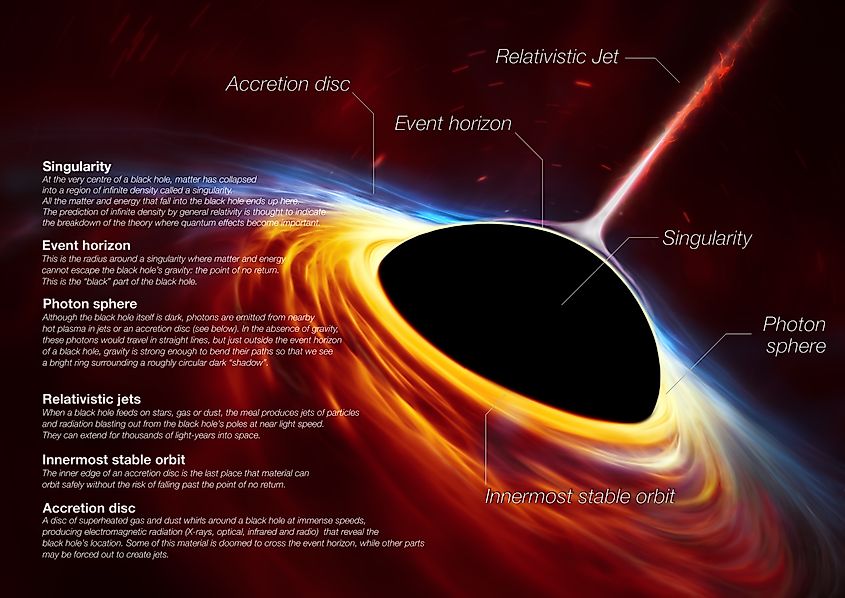
At the center of nearly every large galaxy lies a supermassive black hole, including the Milky Way. Many scientists believe that supermassive black holes can be thousands to billions of times the mass of the Sun. Although scientists continue to study these phenomena, there are still a lot of unanswered questions around them, such as how they came into existence. Some astronomers theorize that they also began with the collapse of high-mass stars shortly after the birth of the universe, giving them an earlier start. Similar to stellar black holes, supermassive black holes grow by merging with other stellar matter, such as gas clouds, and even by colliding with other supermassive black holes.
Intermediate-Mass Black Holes
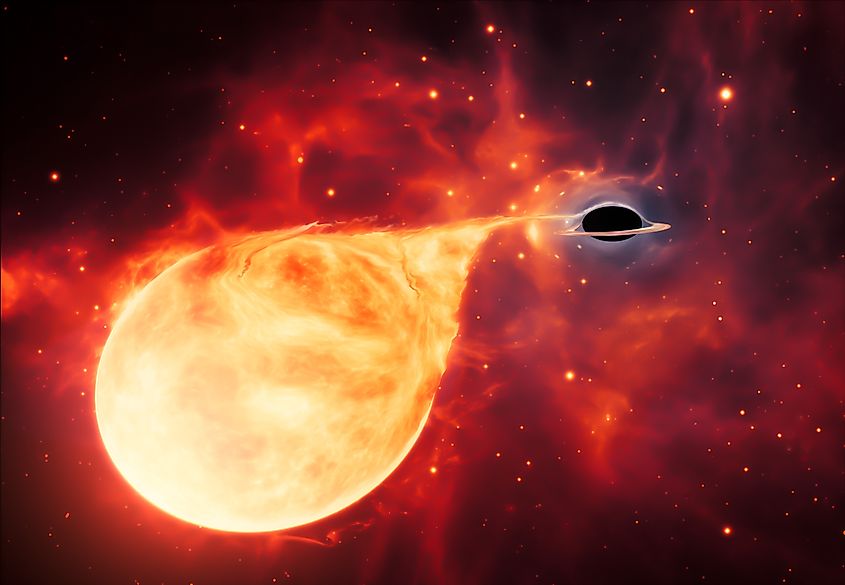
Because of the stark difference in size between stellar black holes and supermassive black holes, scientists theorize that a third type of black hole must exist, representing a middle ground of black hole size. These black holes should be 100 to hundreds of thousands of times more massive than the Sun. While astronomers have found various intermediate-mass black hole candidates, there are not yet any confirmed ones. However, as of July 2024, NASA's Hubble provided a strong argument for the existence of an Intermediate-Mass Black Hole in Omega Centauri.
Primordial Black Holes
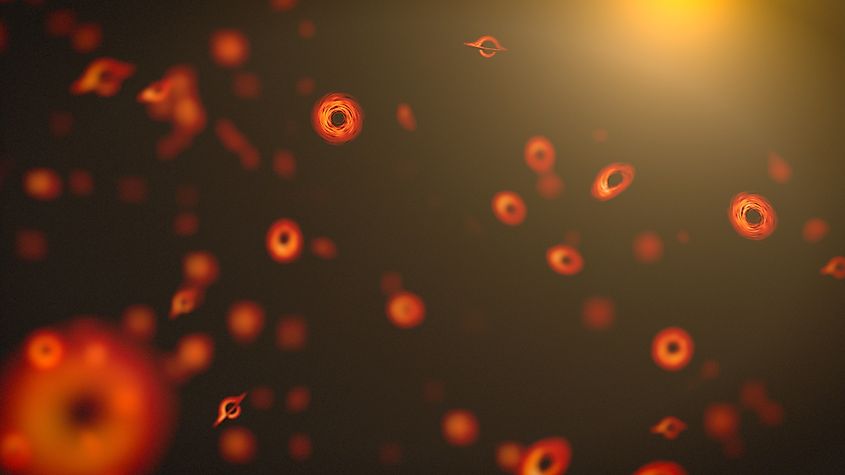
Like intermediate-mass black holes, Primordial Black Holes are also only currently theorized by scientists. Scientists believe that these black holes formed within the first second of the universe’s birth due to hot pockets that were dense enough to immediately form black holes. The mass of primordial black holes could range from being 100,000 times smaller than a paperclip to 100,000 times larger than the Sun. Because low-mass black holes evaporate quicker than higher-mass ones, many of these primordial black holes could already have ceased to exist. However, it is possible that some still exist across the universe, leading scientists to continue searching for them.
Parts of a Black Hole
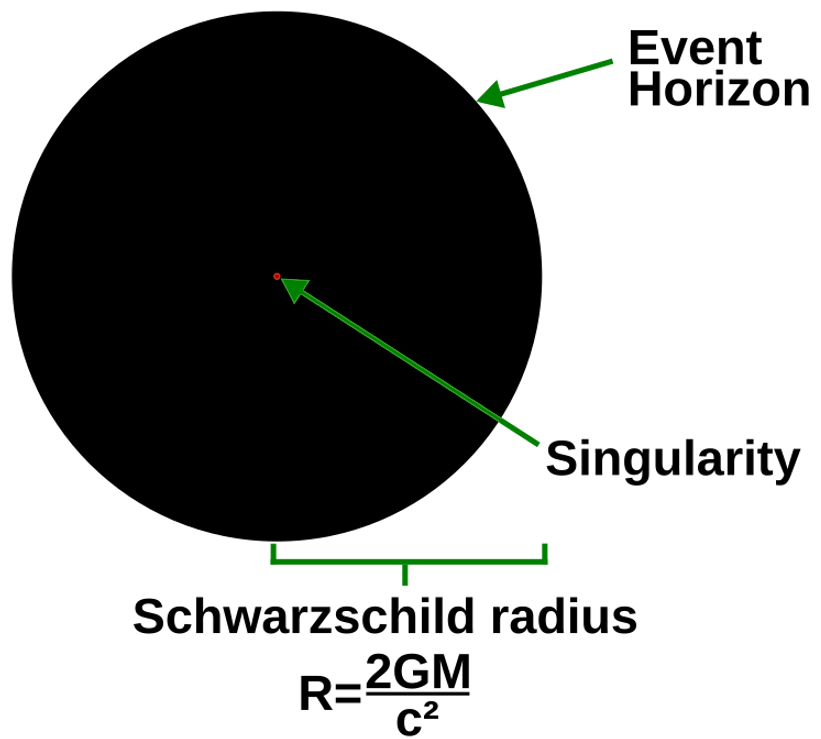
Singularity
At the black hole’s core, matter is thought to collapse into an infinitely dense point known as the singularity. All the energy and matter absorbed by the black hole are believed to converge at this point, making it the 'final destination' within the black hole. If scientists' theories about a black hole’s singularity are correct, it would challenge our current understanding of relativity and the universe.
Event Horizon
The event horizon surrounds the singularity, almost like a 'surface' of the black hole. Once matter crosses this boundary, it reaches the 'point of no return,' where nothing, not even light, can escape. Because light cannot escape, the event horizon neither emits nor reflects light, rendering it completely black and making it impossible for scientists to observe what happens inside.
Accretion Disk
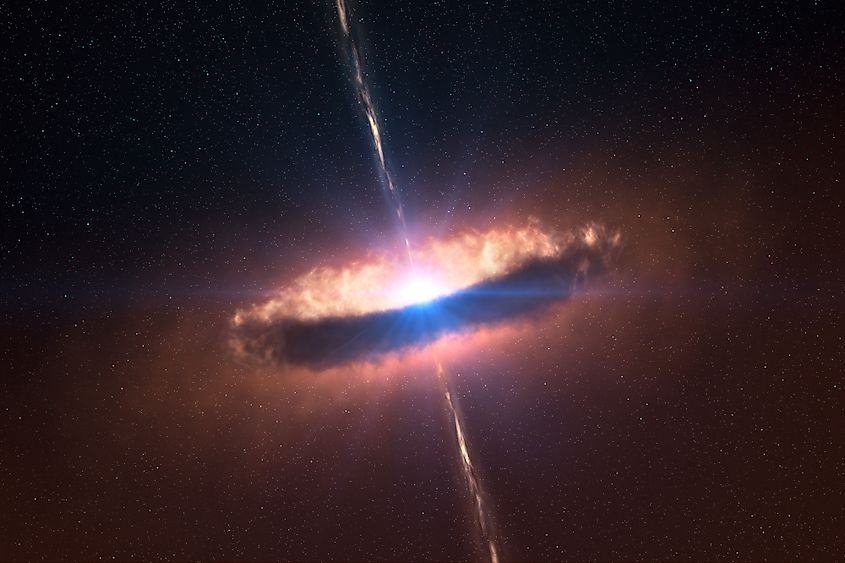
The accretion disk is the black hole’s main source of light and how scientists are able to locate black holes. This disk is composed of hot gas and dust rapidly whirling around the black hole, producing radiation such as infrared, optical, radio, and X-rays that scientists can pick up to determine its location.
Photon Sphere
The photon sphere is a region around a black hole where gravity is so intense that light can orbit it. The light in the photon sphere often comes from the accretion disk, creating distorted images of the disk as the light bends around the black hole.
Relativistic Jets
When a black hole absorbs matter such as dust, gas, or stars, it can produce jets of radiation and particles that are expelled from the regions around its poles at nearly the speed of light. These jets can sometimes extend for thousands of light-years through space.
Innermost Stable Orbit
Scientists believe the innermost stable orbit (ISCO) to be the inner edge of the accretion disk. It represents the closest point where material can orbit the black hole before it inevitably falls in beyond the event horizon, the 'point of no return.
Most Massive Black Hole in the Universe
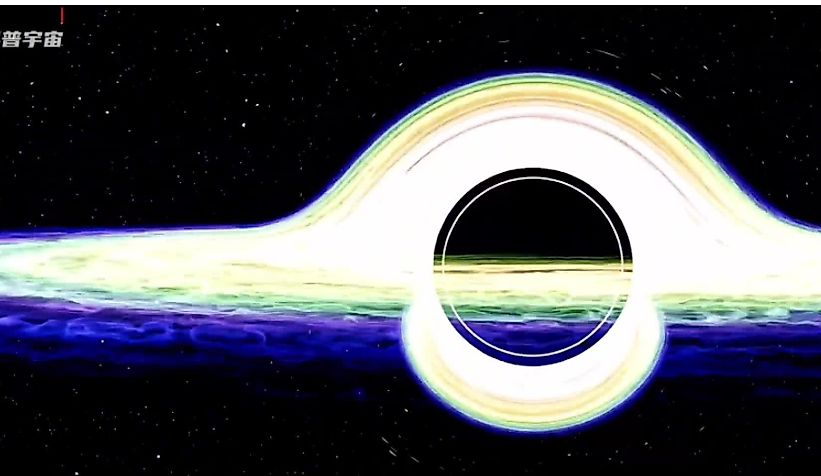
Until a few years ago, scientists estimated that black holes could not exceed a mass of about 50 billion times that of the Sun. However, in 2010, the discovery of the Phoenix Cluster, a massive galaxy cluster located about 5.7 billion light-years away, revealed a supermassive black hole at its center with an estimated mass of around 100 billion times the Sun’s mass. This finding challenged previous beliefs regarding black hole size and mass and identified it as one of the largest known existing black holes today.
Most Massive Black Hole Within the Milky Way
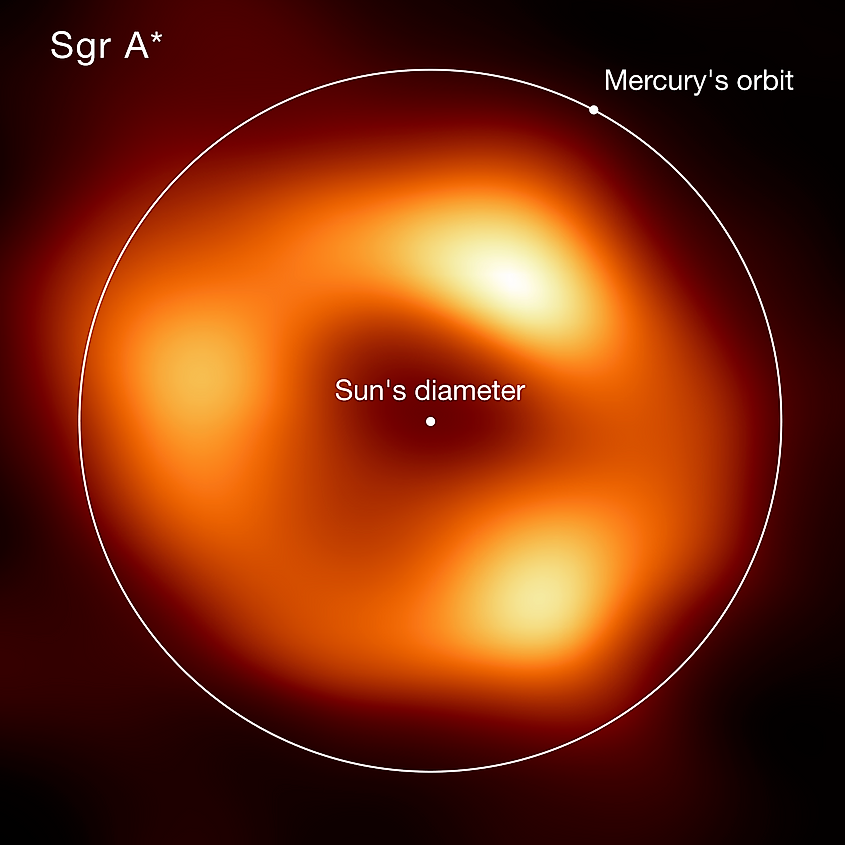
The most massive black hole within the Milky Way is Sagittarius A*, discovered in February of 1974 by Balick and Robert L Brown. The supermassive black hole lies in the center of the galaxy, although it is mostly dormant, only occasionally absorbing dust and gas. Compared to our Sun, it is around four million times more massive. Additionally, at about 26,000 light-years from Earth, it is one of the few black holes where scientists can more closely observe the flow of matter. Although there are still many mysteries surrounding Sagittarius A*, its study continues to provide important insights regarding the behavior of supermassive black holes as well as into the movement and dynamics of the galaxy.

